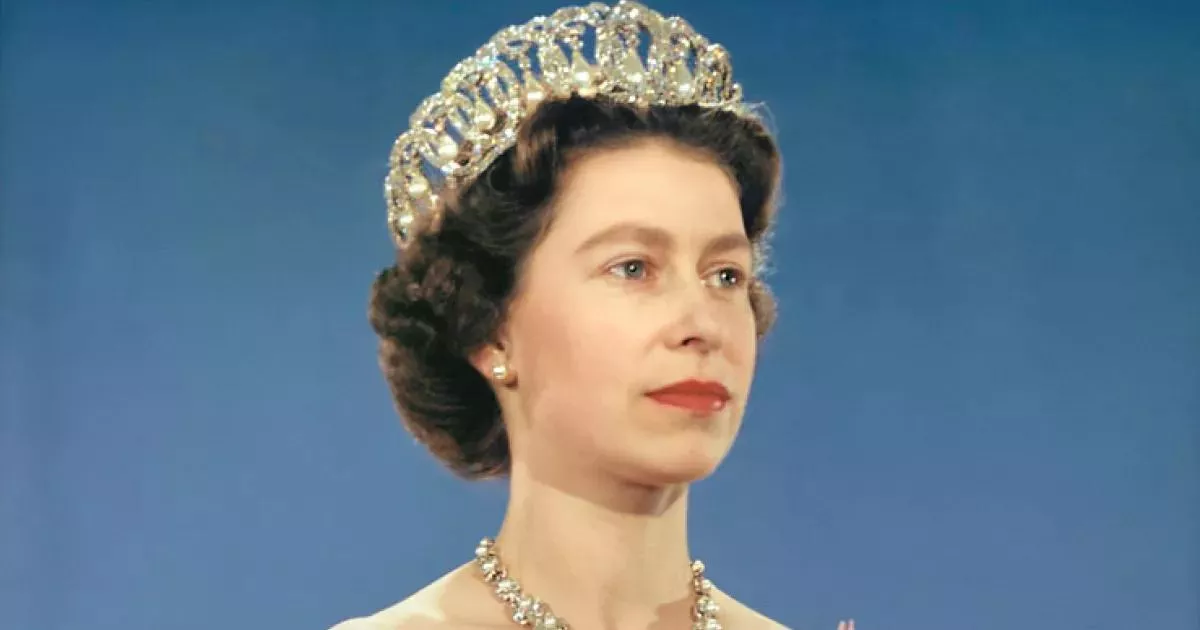A closer look at the defining struggles that shaped Elizabeth II's life and career.
Elizabeth II reigned as Queen of the United Kingdom and other Commonwealth realms from 1952 until her death in 2022. She ruled 32 sovereign states during her lifetime, and 15 at the time of her death. Her reign, lasting 70 years and 214 days, is the longest of any British monarch and the second-longest of any sovereign. She also holds the record as the longest-reigning queen regnant in history.
November 1956: Suez Crisis
In November 1956, Britain and France invaded Egypt in an ultimately unsuccessful attempt to capture the Suez Canal. This event, known as the Suez Crisis, occurred during Elizabeth's reign and had significant political implications.
1957: First Major Personal Criticism of Elizabeth
In 1957, Elizabeth faced her first major personal criticism when Lord Altrincham accused her of being "out of touch" in a magazine. This criticism sparked public outrage and debate.
1964: Visit to Quebec Amid Separatist Tensions
Before her tour through parts of Quebec in 1964, the press reported that extremists within the Quebec separatist movement were plotting Elizabeth's assassination. A riot broke out in Montreal, but her calmness and courage were noted.
1965: Rhodesia's Unilateral Declaration of Independence
In 1965, the Rhodesian prime minister, Ian Smith, unilaterally declared independence while expressing "loyalty and devotion" to Elizabeth. Elizabeth formally dismissed him, but his regime survived for over a decade despite international sanctions.
1966: Aberfan Mining Disaster
In 1966, Elizabeth was criticized for waiting eight days before visiting the village of Aberfan, where a mining disaster killed 116 children and 28 adults. The delay was later regretted.
1975: 1975 Australian Constitutional Crisis
In 1975, during the Australian constitutional crisis, Australian Prime Minister Gough Whitlam was dismissed by Governor-General Sir John Kerr. Elizabeth declined to reverse Kerr's decision, fueling Australian republicanism.
1978: State Visit by Nicolae Ceaușescu
In 1978, Elizabeth endured a state visit to the United Kingdom by Romania's communist leader, Nicolae Ceaușescu, and his wife, Elena, though privately she disapproved of them.
1981: Attack During Trooping the Colour
During the 1981 Trooping the Colour ceremony, six shots were fired at Elizabeth from close range as she rode down The Mall, London, on her horse, Burmese. The assailant, Marcus Sarjeant, was later imprisoned. Elizabeth's composure was widely praised.
1983: Invasion of Grenada
In 1983, Elizabeth was angered when the Reagan administration ordered the invasion of Grenada, one of her Caribbean realms, without informing her.
1983: Mental Health Act 1983
Jaswant Singh Chail, who attempted to assassinate the Queen, was placed under a hybrid order under section 45A of the Mental Health Act 1983, ordering that he remain at Broadmoor Hospital to be transferred into custody only after receiving psychiatric treatment.
July 1986: Worries over Thatcher's policies
In July 1986, The Sunday Times reported that Elizabeth II was worried about Margaret Thatcher's economic policies, which she believed fostered social divisions. She was also alarmed by high unemployment, riots, the miners' strike violence, and Thatcher's refusal to sanction South Africa's apartheid regime.
September 1986: Royal Family Media Coverage
In September 1986, Donald Trelford wrote in The Observer that the media coverage of the royal family had become so intense that the boundary between fact and fiction was blurred, with some papers not caring about the truth of their stories.
1987: Criticism and Political Events
In 1987, Elizabeth II became a target of satire after younger royals participated in 'It's a Royal Knockout.' She publicly supported divisive constitutional amendments in Canada, drawing criticism. Additionally, the elected Fijian government was deposed in a military coup, and Elizabeth supported the Governor-General's attempts to negotiate a settlement.
November 1992: Annus Horribilis Speech
In November 1992, Elizabeth II described 1992 as her 'annus horribilis' during a speech marking her Ruby Jubilee. This was due to increased republican sentiment, press scrutiny of her wealth, marital issues within her family, a fire at Windsor Castle, and general criticism of the monarchy. In the same month, demonstrators threw eggs at The Queen during a state visit to Dresden.
1992: Annus Horribilis
In 1992, the Queen experienced what she termed her 'annus horribilis,' marked by several family crises and public scrutiny.
January 1994: Wrist Injury
In January 1994, Elizabeth II broke her left wrist when the horse she was riding at Sandringham tripped and fell.
December 1995: Divorce Suggestion
At the end of December 1995, Elizabeth II, after consulting with her husband, John Major, the Archbishop of Canterbury, and her private secretary, wrote to Charles and Diana suggesting that a divorce would be advisable.
August 1997: Diana's Death and Public Reaction
In August 1997, following Diana's death in a car crash in Paris, Elizabeth II shielded her grandsons at Balmoral. The royal family's silence and the lack of a flag at half-mast over Buckingham Palace led to public dismay.
2003: Lawsuit against Daily Mirror
In 2003, Elizabeth II sued the Daily Mirror for breach of confidence after a reporter posed as a footman at Buckingham Palace and obtained an injunction preventing the newspaper from publishing gathered information.
October 2006: Missed Emirates Stadium Opening
In October 2006, Elizabeth II missed the opening of the new Emirates Stadium due to a strained back muscle.
May 2007: Report on Frustration with Blair's Policies
In May 2007, The Daily Telegraph reported that Elizabeth II was "exasperated and frustrated" by Tony Blair's policies, particularly concerning the British Armed Forces' involvement in Iraq and Afghanistan.
March 2020: Move to Windsor Castle
In March 2020, as the COVID-19 pandemic hit the United Kingdom, Elizabeth moved to Windsor Castle and sequestered there as a precaution. Public engagements were cancelled and Windsor Castle followed a strict sanitary protocol nicknamed "HMS Bubble".
April 2021: Death of Prince Philip
On 9 April 2021, Prince Philip died after 73 years of marriage, making Elizabeth the first British monarch to reign as a widow or widower since Queen Victoria. Due to COVID-19 restrictions, Elizabeth sat alone at Philip's funeral service.
February 2023: Jaswant Singh Chail Pleads Guilty
In February 2023, Jaswant Singh Chail pleaded guilty to attempting to injure or alarm the sovereign, and was sentenced in October to a 9-year custodial sentence plus an additional 5 years on extended licence. The sentencing judge also placed Chail under a hybrid order under section 45A of the Mental Health Act 1983, ordering that he remain at Broadmoor Hospital to be transferred into custody only after receiving psychiatric treatment.
Mentioned in this timeline
Saudi Arabia officially the Kingdom of Saudi Arabia KSA is...
New Zealand is an island country located in the southwestern...
India officially the Republic of India is a South Asian...

Christmas is an annual festival celebrated on December th commemorating...
Hong Kong is a Special Administrative Region of the People's...
Africa is the second-largest and second-most populous continent comprising of...
Trending
2 months ago Wole Soyinka's US Visa Revoked: Nobel Laureate Speaks Out Against Travel Ban.

7 months ago Russell Brand Denies Rape and Sexual Assault Allegations, Pleads Not Guilty in Court

Chase Young is a professional football defensive end currently playing for the New Orleans Saints in the NFL He gained...

5 months ago Venus Williams, 45, returns to professional tennis with DC Open wild card.

1 month ago Ja'Marr Chase Suspended One Game: Spitting Incident Sparks Controversy, Appeal Pending

9 months ago Red Sox-Cardinals Game Postponed; Doubleheader Scheduled Due to Rain on Sunday.
Popular

Tucker Carlson is an American conservative political commentator known for...

Candace Owens is an American conservative political commentator and author...

XXXTentacion born Jahseh Dwayne Ricardo Onfroy was a controversial yet...

Ben Shapiro is a prominent American conservative political commentator media...

William Franklin Graham III commonly known as Franklin Graham is...

Bill Gates an American businessman and philanthropist revolutionized personal computing...
